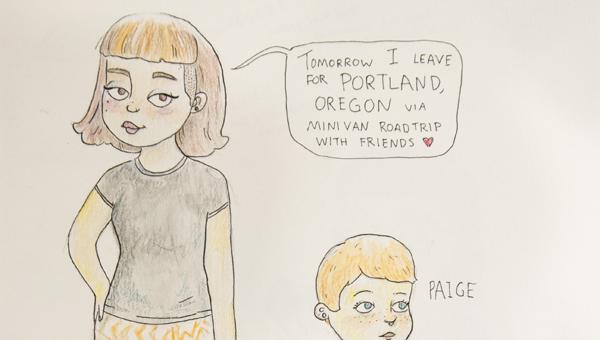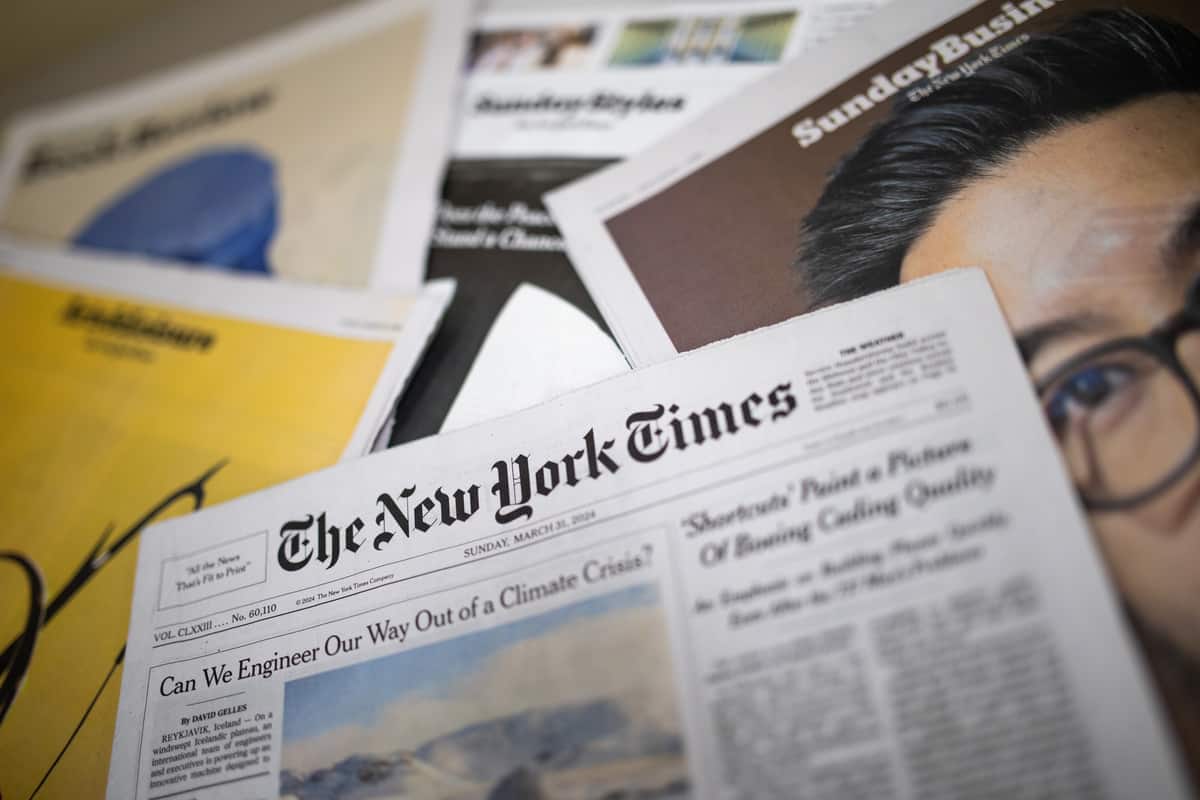Talia Scarpelli, a senior majoring in art, said her sketchbook allows for creative freedom in a study which continuously relies on criticism.
“A sketchbook is definitely an important space to draw things where you’re not worrying about what other people have to say,” she said.
For Scarpelli, drawing is a way to get her ideas down on paper. She said it is especially important when creating cartoons because they sometimes come out totally different on paper than they appear originally in her head.
Katharine Buckley, a senior majoring in studio art, uses her sketchbook to sort through ideas and try different approaches to potential pieces. She said her sketchbook has been particularly useful in her graphic design classes. Before starting graphic design on her computer, Buckley does concept work in her sketchbook to get a feel for what she will ?later design.
“I think the only thing more intimidating than a blank page is a blank computer screen,” ?Buckley said.
Although Scarpelli is an art major and creates many pieces and drawings for class, she mainly uses her sketchbooks for her ?personal art.
“My schoolwork for graphic design rarely overlaps with my personal art, but I try to draw at least once a week,” Scarpelli said.
When she does get the chance to put pen to paper, Scarpelli tends to stick to a particular interest. She often draws different variations of made up monsters, but has recently started drawing landscapes. She is also typically inspired by the works of comic artist R. Crumb and manga, a graphic novel style native to Japan.
Heather Whidden, a professor of art at the University, said it is important for students to use their sketchbooks daily.
“The more you put into your sketchbook the more you will reap the benefits,” Whidden said. “Inspiration generally comes sometime during the process or because you have been engaged with your materials.”
For inspiration on what to draw in their sketchbooks, both Scarpelli and Buckley use their old sketchbooks to get ideas during times of “artist’s block” to look at past inspirations. Buckley said she often skims sketchbooks from high school to find techniques to incorporate into her ?current works.
These sketchbooks can provide a window to an artist’s past, much in the same way a diary provides evidence of how a writer was feeling during a particular time in his or her life.
“I look back at my old sketchbooks, and sometimes it’s kind of painful, like ‘What was I thinking when I drew that?’ and sometimes it’s like, ‘That looks really cool, how did I do that?’” Scarpelli said.
Trent McDaniel, a junior majoring in visual journalism, enjoys looking back at his old sketchbooks to see how he and his work has changed over time. By not throwing away sketchbooks, McDaniel and other artists have access to the blueprints for former projects, some of which never completed or realized.
“To me, a sketchbook means groundwork. You can start with a blank page and build up from anything,” McDaniel said. “You can spark an idea and then flip a page and start over.”
While she keeps all her old sketchbooks, Scarpelli has found a way to chronicle her work in less traditional ways, such as scanning all of her drawings onto her computer. By scanning pages of her sketchbook, Scarpelli has been able to sell some of her drawings, but still keeps her original copies in the sketchbook.
McDaniel enjoys looking back at his old sketchbooks to see how he and his work has changed ?over time.
“Having a sketchbook, you can expect the first page to be completely different than the last,” he said. “It’s a timeline of how you’ve grown [as an artist] or changed your drawing style.”







